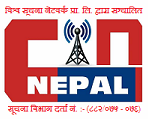Omprakash Sarraf: The best way to understand a culture and people is to travel to where they live

For decades, mountaineering and trekking have been the major pull factors for tourists travelling to Nepal. This has allowed tourism to grow and expand in two regions of the country: the mid-hills and the Himalayas. But for decades, tourism has remained relatively unexplored in a large part of the country’s Tarai region, which occupies more than 20 percent of the country’s landscape. Hoping to attract more international and domestic tourists to Tarai, a group of people from the region started the initiative VisitMadhesh in 2018. The group has since been working to promote the region’s tourism attractions in and outside Nepal.
How did the idea for the VisitMadhesh initiative come about?
We came up with the concept in 2018 and started working on it from thereon. We felt the need to start this initiative because Nepal’s tourism is very limited to the mountains and hills of the country. Since all of us come from Tarai, we were aware of the region’s tourism potential and how the region could contribute to adding another dimension to Nepal’s tourism.
What has the initiative done so far to meet its goals?
In 2018, one of the first things we did was travel to all the districts in the Tarai region, from Jhapa in the east to Kanchanpur in the west. The reason behind doing so was to collect as much information as we could on different attractions—from religious, cultural to natural—that could be of interest to tourists. Based on our findings, we came up with a 98-page document, which we submitted to the Nepal Tourism Board.
Talked to Omprakash Sarraf, VisitMadhesh’s chief operating officer, about the initiative and how they plan to make the initiative a success and the challenges in doing that. Excerpts:
We then created a team in each and every district so that we could plan and coordinate our activities in the region. We have been mobilising the teams to conduct clean-up campaigns in historical and religious sites in the respective areas, and have also conducted tourism awareness campaigns. We have found the latter very important because the tourism industry is non-existent in many areas of the region. Getting the local governments and citizens and convincing them of the important role tourism plays in socio-economic development has been one of our core focuses.
Apart from that, we also set up teams in 12 countries to help promote the region and to connect expats from the region living in those countries with our work, and how they could contribute to making the region realise its tourism potential.
What are the main challenges you have seen so far?
Even though the region has what it takes to attract a lot of tourists from all over the country and abroad, what it lacks is tourism-related infrastructure. Most of the hotels in the region are congregated in destinations that are already popular among tourists, for example Janakpur, Lumbini, Bardiya and Nepalgunj. But many of the hotels aren’t standardised. If we are to attract more people, we will have to improve on that. We are already in talks with various government and non-government institutions we could collaborate with to provide hospitality training to hotel staff in the region. There’s also a lack of tourist guides. We are also working on how to provide guide training.
But one of the major challenges we have observed has been convincing the government officials to look beyond the country’s traditional tourism approach of focusing only on mountains and hills.
How will a flourishing tourism industry in Tarai contribute to the region’s growth?
A flourishing tourism industry across the region will help create jobs in the local communities, help preserve age-old traditions, convince the local communities the importance of conserving and protecting important cultural and historical sites. Tourism will also help create a market for local products and handicrafts.
One of our key focuses is getting more domestic tourists from mountains and hills of the country. We believe that the best way to understand a culture and people is to travel to where they live. So, if we get more tourists from other regions of the country, I think it will help dispel a lot of negative notions about the region that exist. This is important to strengthen the bond among us Nepalis and help us understand and empathise with each other.
Destinations in the region you think has the potential but lacks promotion.
Oh, there are too many. Linga in Kanchanpur is a very important religious site that is very popular among locals but is relatively unknown to the rest of the country. Similarly, there’s Kailali’s Ghodadhodi Tal and Tikapur Park; Bardiya’s Krishnasar; Kapilvastu’s Jagdishpur Reservoir; Makwanpur’s Sahid Smarak Park is the biggest park dedicated to the country’s martyrs; Sarlahi’s Nadi Tal, are among some of the attractions of the Terai.
Source:kathmandupost








